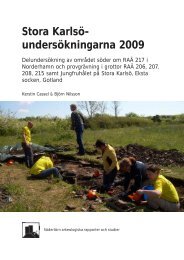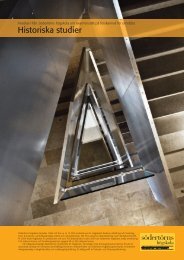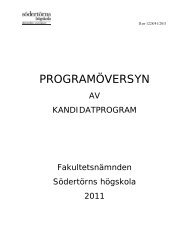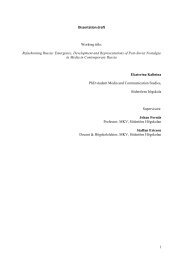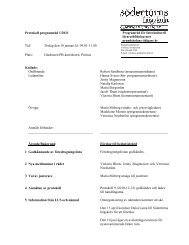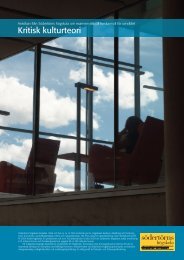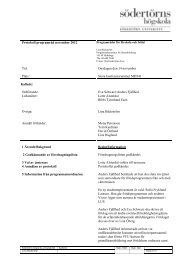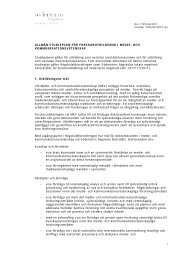CIVIL SOCIETY IN PEACEBUILDING - A Case Study Analysis of ...
CIVIL SOCIETY IN PEACEBUILDING - A Case Study Analysis of ...
CIVIL SOCIETY IN PEACEBUILDING - A Case Study Analysis of ...
Create successful ePaper yourself
Turn your PDF publications into a flip-book with our unique Google optimized e-Paper software.
The lack <strong>of</strong> contact in between the different initiatives on the different levels was something thatcharacterized the process in Sudan before the CPA. The two leading parties, the SPLM/A and the GoS,excluded other parties during the whole process (Simmons & Dixon 2006: 62). The initiatives supportedclosely by GoS or SPLM might not belong to the middle-range level considering Lederach’sexplanations about the leadership on this level. Dialogues and small negotiations that led to some goodoutcomes like written agreement <strong>of</strong> tribal leaders to work on peacebuilding and restoring relationshipsand specific local agreements. (Bradbury; Ryle; Medley; Sansculotte-Greenidge 2006: 161-165). In thecase <strong>of</strong> Sudan before the CPA the middle-range level does not seem to have had a lot <strong>of</strong> attention.Concerning the timeline <strong>of</strong> peace building in the case <strong>of</strong> Sudan the process on the grassroots levelstarted before the process on the top-level. According to Rift Valley institute’s base line study from2006 have many peacebuilding and conflict transformation activities have been supported throughgrassroots-initiatives in Sudan. They argue that the interest <strong>of</strong> support the local level was big (Bradbury,Ryle, Medley, Sansculotte-Greenidge 2006: 6). As many <strong>IN</strong>GOs work with the civil-society, it ishowever hard to define who is a representative <strong>of</strong> the civil-society or not. There are cases when thetraditional leaders are approached as being a part <strong>of</strong> the civil society and then the next day they appearto be warlords (Bradbury; Ryle; Medley; Sansculotte-Greenidge 2006: 14).To separate what has been conducted at the middle-range level and at the grassroots level is not aneasy task in the myriad <strong>of</strong> peace-building efforts. The study from the Rift-Walley institute that hasmapped local peace processes includes mostly the grassroots level but also the middle-range levelthrough the participation <strong>of</strong> specific ethnic and religious leaders and intellectuals (Lederach 1997: 41).Sudan being the biggest country in Africa and with a lot <strong>of</strong> different leaders at different levels makes ithard to distinguish them from each other. Most <strong>of</strong> the initiatives at the grassroots level were conductedin Southern Sudan between the different ethnic groups. The only reconciliation initiatives conductedbefore the CPA was signed that included communities on the government side and communities on theSPLA areas (Bradbury, Ryle, Medley, Sansculotte- Greenidge 2006: 21).The GoS, SPLM and UNICEF were also big initiators to the cross- border issues and interfaithdialogues. (Bradbury; Ryle; Medley; Sansculotte-Greenidge 2006: 171-173). Between 1983 and January2005 accomplished dialogues within the grassroots level, CSOs managed to discuss issues like cessation<strong>of</strong> hostilities, return <strong>of</strong> abducted children, forgiveness, reconciliation in between local communities andso forth (Bradbury; Ryle; Medley; Sansculotte-Greenidge 2006: 147-150). From the initiatives held,nine <strong>of</strong> them were held 2002 and later, which is only 3 years before the CPA was signed. In the southernregion, however the documented initiatives counts up to thirty-eight meetings but with a start in 1994.The signing <strong>of</strong> the CPA could therefore be seen as result <strong>of</strong> a long an active peacebuilding process fromCSOs. The initiatives taken from CSOs covered for example sharing <strong>of</strong> natural resources, women25



